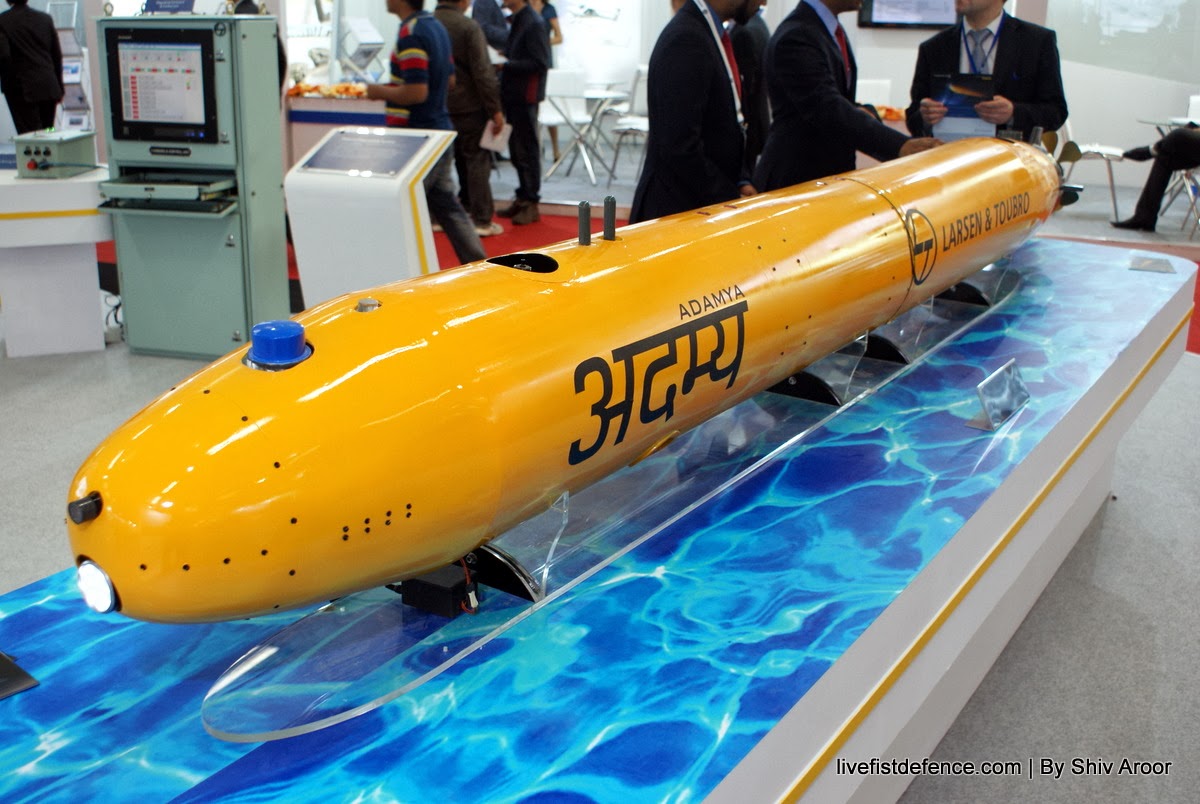
The Indian Navy is looking to acquire 10 autonomous underwater vehicles (AUV) geared to detect and actively destroy underwater mines and similar threats. The requirement, published last month, is the latest iteration of a long standing — and so far fruitless — quest for long endurance surveillance AUVs. In this latest quest, the navy’s Special Operations & Diving Directorate has said it is looking for AUVs that are two-man portable, designed for surveillance, identification and explosive ordinance disposal (EOD) at harbour and at sea.
The navy’s request for information (RFI) says it is looking for AUVs that upon identifying mines or underwater improvised explosive devices (IEDs), can then be remotely commanded to fire an explosive shaped charge to detonate and destroy the object. The control console for the AUV, as is standard for such products, needs to be deployable on a rigid inflatable boat, with a 3-km radius of operations.
The threat to harbours has been pronounced for years, and amplified by the Indian Navy’s much larger — and ludicrously meandering — quest for minesweeper ships. A fruitless 15 year effort to acquire a desperately needed dozen mine countermeasure vessels (MCMVs) has hit wall after wall, with an exasperated Indian Navy down to its final pair of ships capable of clearing mines. Last heard, the navy had decided to loosen requirements to make way for a larger competition. While the EOD AUV is a far smaller procurement thrust, it is an unignorable reminder of the Indian Navy’s chronic lack of success in acquiring mine countermeasure assets.
While the new AUV RFI doesn’t restrict responses, Indian industry has unveiled a number of AUV products over the last few years. Apart from DRDO’s AUV offering that’s seen various tests by the Indian Navy, but remains in development, L&T has frequently showcased a family of AUVs (Adamya and Amogh), while IIT Bombay has an active AUV development and proving program called Matsya with sponsors that include the DRDO and American firm Teledyne Technologies. The latter firm is the maker of the GAVIA AUV, a product that has been fielded in the past in NATO underwater EOD exercises in Iceland.
The Indian Navy’s present requirement likely stems from interactions with the US Navy. Since 2016 the Indian Navy has had a first hand look at how the US Navy deploys AUVs in the underwater EOD role at Malabar exercises. Seen in these pictures below from the Malabar 2016 exercise, US Navy personnel are seen using an AUV and a Teledyne VLBV ROV in an EOD demonstration.
Capability soon with Indian Navy: Here, US Navy EOD demo for Indian Navy EOD crew using an AUV at #Malabar2016. pic.twitter.com/Z5qKAekXRR
— Livefist (@livefist) June 19, 2016
The Indian Navy’s quest for AUV assets goes back years, though there have been no major additions of the capability beyond a handful of test specimens deployed across units. In 2018, for instance, the navy announced it was interested in acquiring 15 high endurance AUVs as a first step towards creating an unmanned underwater squadron on the lines of the US Navy’s UUVRON 1. You can read all about that parallel Indian Navy requirement here.

The navy sent out its first feelers for AUVs in 2010. Like several other such campaigns, acquisition priorities have meant AUVs haven’t been contracted in any real numbers. The navy does operate self-propelled underwater reusable targets (the Saab AUV-62) but doesn’t yet deploy AUVs for the crucial ISR role.
If this new attempt to acquire AUVs is seen as another capability accretion effort amidst the military standoff with China, a view of the other side helps. As Livefist reported in 2018, the Chinese military has at its disposal a slew of indigenous AUVs, including the long endurance Qianlong III and Haiyan, said to be part of its underwater ‘great wall’.
